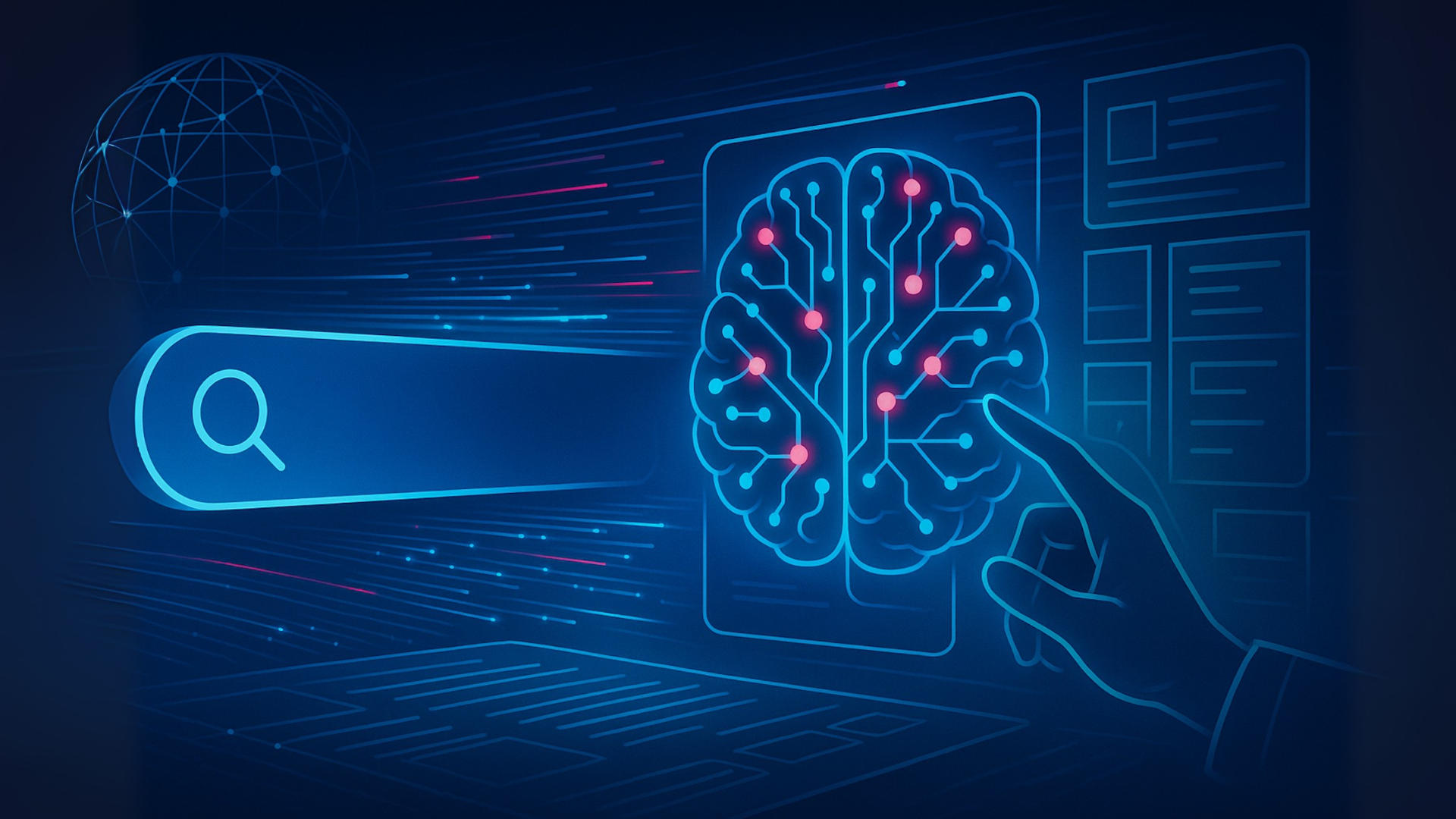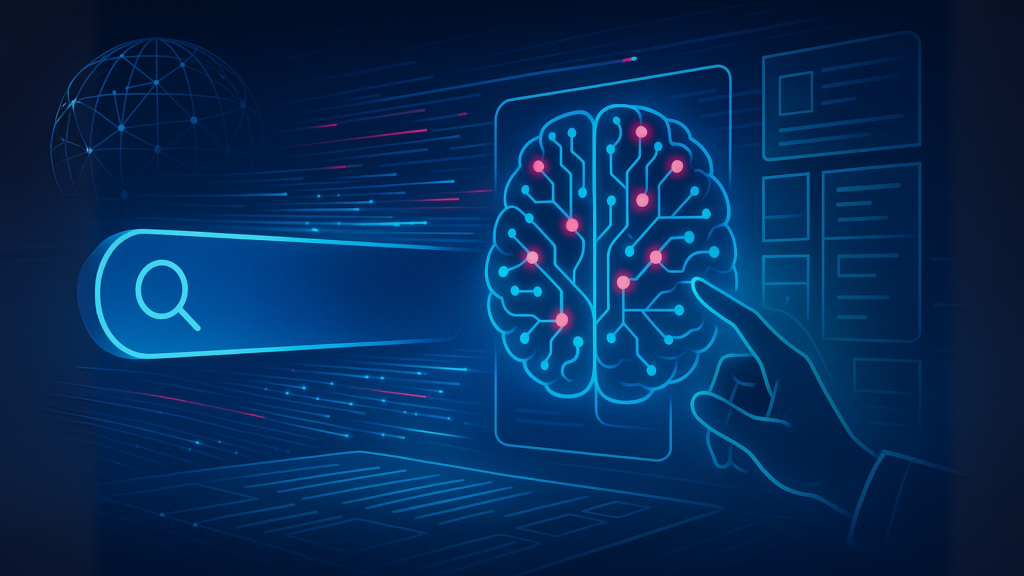The end of SEO-PPC silos: Building a unified search strategy for the AI era

For years, SEO and PPC defined two sides of search – one focused on organic authority, the other on paid performance.
Both aimed to capture traffic but often worked in silos, optimizing toward different goals.
Now, that separation is ending.
The rise of generative AI has redrawn the map, merging once-distinct disciplines into a single, fluid ecosystem.
Search engines like Google and Bing have evolved into conversational AI platforms that deliver instant, often singular answers while seamlessly integrating ads.
This shift – marked by zero-click results, conversational interfaces, and pre-packaged information – means no single strategy can guarantee brand visibility anymore.
SEO and PPC must converge in an AI-first world
Generative AI has blurred the boundaries between organic and paid visibility, making the old siloed model obsolete.
SEO and PPC now function as two interdependent halves of a single strategy – each shaping the other’s success.
A brand’s organic authority, built through strong SEO, directly influences both organic and paid performance within AI answers.
High-quality content can boost Quality Scores and ad relevance, leading to lower costs and better placements.
At the same time, AI answers and snapshots are crowding out traditional listings, leaving fewer – but more valuable – moments of visibility.
Capturing those moments requires close coordination between SEO and PPC.
A holistic strategy ensures a brand shows up wherever the AI-guided searcher might encounter it – whether in an organic snippet, a rich result, or an integrated ad.
The result is a new set of success metrics focused on combined visibility and brand authority, not just clicks and impressions.
The rise of AI in search and its impact on user behavior
Before diving into strategy, it’s important to understand how generative AI is reshaping user behavior.
The integration of AI in search is changing how people interact with engines at a fundamental level.
The most immediate shift is the rise of zero-click answers.
AI-powered results now surface relevant information directly on the results page, often eliminating the need to visit a website.
This is especially common for informational queries, where AI synthesizes data from multiple sources into quick, digestible summaries.
This behavior is driving what’s known as funnel compression.
As AI answers become more robust, they shorten the user journey, delivering solutions or product recommendations much earlier in the process.
As a result, user expectations have evolved.
Instead of scrolling through a list of blue links, people now look for a single, comprehensive answer or a curated set of top options.
They expect relevance and clarity delivered in a conversational, easy-to-digest format.
Ranking in Position 1 for a keyword still matters, but it no longer guarantees the same traffic.
While overall search volume may hold steady, traffic distribution is shifting.
Marketers now have to compete for visibility in both traditional search results and AI-generated content.
Dig deeper: What AI means for paid media, user behavior, and brand visibility
SEO’s role in an AI-driven search world: Building the organic foundation
Today, SEO’s primary role is to build the foundational credibility that AI systems rely on.
When synthesizing information, AI models look for what Google calls “signals of relevance” – the same elements SEOs have long cultivated:
- Quality content.
- Brand authority.
- User-focused answers.
A successful SEO strategy in this new era should center on five key areas:
- Understand the brand narrative: SEO must move beyond keywords to express a brand’s broader story and communicate it consistently across platforms.
- Create content as a credible source: Content must be not only well-written but demonstrably trustworthy. AI models favor information that reflects experience, expertise, authoritativeness, and trustworthiness (E-E-A-T).
- Optimize for AI visibility: Structure content so AI can easily parse and summarize it – using clear headings, scannable formats, and concise answers to common questions.
- Build cross-platform presence: Visibility now extends beyond Google. A strong presence across social media, industry forums, and online communities strengthens the brand signals AI models detect and trust.
- Monitor brand sentiment: Negative reputation signals can discourage AI systems from referencing your content, so SEOs must actively manage and improve brand perception.
In essence, SEO builds the organic foundation that PPC can later amplify.
Authoritative, credible content enhances both relevance and ad performance – creating a virtuous cycle where organic authority fuels paid efficiency.
Dig deeper: Your playbook for AI-powered cross-channel brand visibility
Get the newsletter search marketers rely on.
See terms.
PPC’s evolving role: Maximizing performance with AI context
As the organic landscape shifts, PPC’s role is evolving alongside it.
Paid search has moved beyond bidding on keywords for top-of-page placement.
Ads can now appear within conversational, chatbot-style answers or alongside dynamic, AI-generated summaries.
These “ads inside AI answers” are selected based on both the user’s query and the AI-generated content itself.
In an AI-driven search landscape, PPC teams must adapt in four key ways.
Prioritize quality over quantity
While there may be fewer impressions as AI answers satisfy more queries, the clicks that do occur will be of much higher quality.
As Microsoft’s early experiments with Bing Chat have shown, AI-generated results can drive faster conversions and higher-intent traffic than traditional search ads.
Marketers should anticipate higher-intent clicks but potentially fewer impressions, which means that clicks will be more valuable than ever before.
Rethink keyword strategy
This shift also necessitates a rethinking of keyword strategy.
Google has already indicated that paid search will move away from pure keyword triggers toward intent and audience modeling.
PPC teams will need to align campaigns with the user intent patterns behind AI queries, rather than focusing solely on exact keyword matches.
This requires a deeper understanding of the user journey and the questions they are asking at every stage of the funnel.
Refine bids and budget allocation
PPC teams will also need to adapt their budget allocation and bids accordingly.
Due to limited inventory, we will likely see higher CPCs for certain commercial queries, but these clicks are also expected to convert at a much higher rate.
This means a more nuanced bidding strategy – one that values quality over quantity – will be essential.
Leverage SEO synergy
Last but not least, PPC must also leverage SEO synergy.
With SEO insights at hand, PPC teams are equipped to strategically refine and better optimize campaign performance.
For example, if SEOs discover that a brand’s content is appearing in AI summaries for a specific type of query, that query then becomes a prime target for a paid ad.
This approach allows a brand to effectively “own” the AI result, appearing in both the organic snippet and the adjacent ad.
Dig deeper: How to build a paid media team in the AI age
The holistic search playbook: Uniting SEO and PPC
As AI continues to reshape how people search – and how brands appear – it’s time to turn insight into action. Here’s how to put it into practice.
1. Align on shared goals and metrics
Break down silos by tracking combined visibility, not isolated performance.
SEO and PPC teams should share dashboards that include organic impressions, AI snippet appearances, and ad visibility to gain a complete view of search performance.
2. Conduct joint prompt and intent research
Collaborate to map the full user journey.
By understanding the questions users ask at each stage – from top-of-funnel informational needs to bottom-of-funnel product queries – teams can build a unified intent strategy.
Organic content can target broad informational needs, while paid campaigns capture complementary commercial terms, both aligned around the same core themes.
3. Build content that powers both SEO and PPC
Content fuels both channels.
- For SEO, create in-depth, trustworthy resources that AI can confidently summarize and rank.
- For PPC, ensure those same pages make strong landing pages – fast, relevant, and conversion-oriented.
SEO provides the authority while PPC delivers the amplification.
4. Emphasize brand trust signals
In an AI-first world, brand authority is critical.
- SEO should cultivate off-page credibility through brand mentions, expert visibility, and earned media.
- PPC can reinforce these signals by highlighting proof points – years in business, awards, customer reviews – within ad copy.
Together, these efforts strengthen trust and drive recognition.
5. Adapt to platform nuances
Not all AI systems behave the same.
Google’s AI snapshots and integrated ads differ from Bing’s chat-based experience.
Teams should stay informed, test across platforms, and allocate budget to experimentation, since what works for one may not work for another.
6. Reinvent analytics and attribution
Move beyond last-click attribution.
A unified reporting framework that captures total search-driven conversions – organic and paid – gives a more accurate view of ROI and supports smarter investment decisions.
7. Commit to continuous optimization and learning
This is an ongoing process, not a one-time project. SEO and PPC teams should meet regularly to share insights.
- SEOs can surface emerging queries.
- PPC teams can report on top-performing ads.
Continuous experimentation across the combined funnel enables small, data-driven tweaks that yield outsized results.
Dig deeper: How to maximize PPC and SEO data with co-optimization audits
The AI-first search journey: Converge for success
AI has permanently altered the search landscape, making SEO-PPC convergence essential.
As organic and paid results increasingly coexist in AI-generated answers, marketers who cling to silos risk losing visibility and market share.
A holistic strategy ensures brand discovery and a seamless user experience throughout the AI-driven search journey.
When SEO provides foundational credibility and PPC delivers targeted presence, brands can appear wherever and however an AI surfaces answers – whether offering the information or the solution.
Search will continue to evolve, but success will belong to marketers who prioritize relevance, cross-channel collaboration, and unified metrics to maximize performance.







Recent Comments